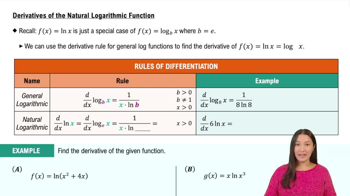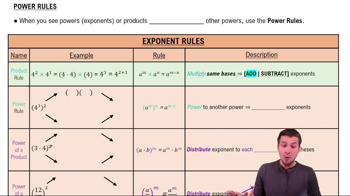{Use of Tech} The Witch of Agnesi The graph of y = a³ / x²+a², where a is a constant, is called the witch of Agnesi (named after the 18th-century Italian mathematician Maria Agnesi).
b. Plot the function and the tangent line found in part (a).
 Verified step by step guidance
Verified step by step guidance Verified video answer for a similar problem:
Verified video answer for a similar problem:



 3:59m
3:59mMaster Derivatives of Linear Functions with a bite sized video explanation from Patrick
Start learning